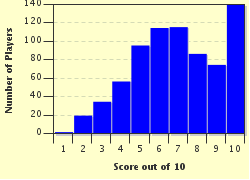Quiz Answer Key and Fun Facts
1. The word geyser comes from the "Great Geysir", which is an erupting stream found in which of the following countries?
2. Roughly half of the world's geysers are found in which of the following places?
3. While cone geysers erupt from the ground, what do you call a geyser that erupts from a body of water?
4. What is the name of the world's tallest geyser, which is found in Yellowstone National Park?
5. At one time the Waimangu Geyser in New Zealand was the most powerful geyser in the world. What occurrence put an end to this magnificent geyser in 1904?
6. The second largest concentration of geysers in the world can be found on which Russian peninsula?
7. Which of these is the only populated continent to not have geysers?
8. Which slender South American country is home to the most geysers in the southern hemisphere?
9. Geysers are usually found in areas of high volcanic activity.
10. There are such things as cold water geysers.
Source: Author
dcpddc478
This quiz was reviewed by FunTrivia editor
Pagiedamon before going online.
Any errors found in FunTrivia content are routinely corrected through our feedback system.

